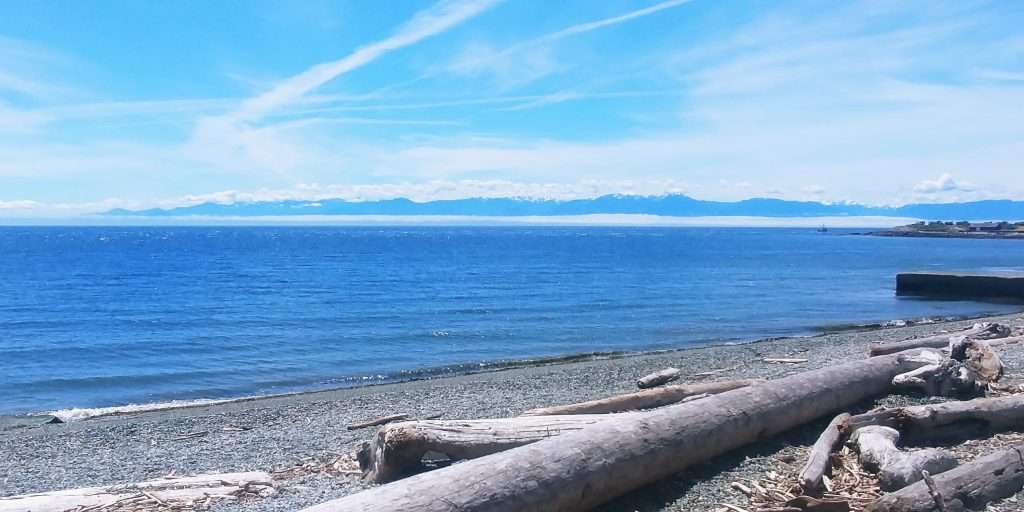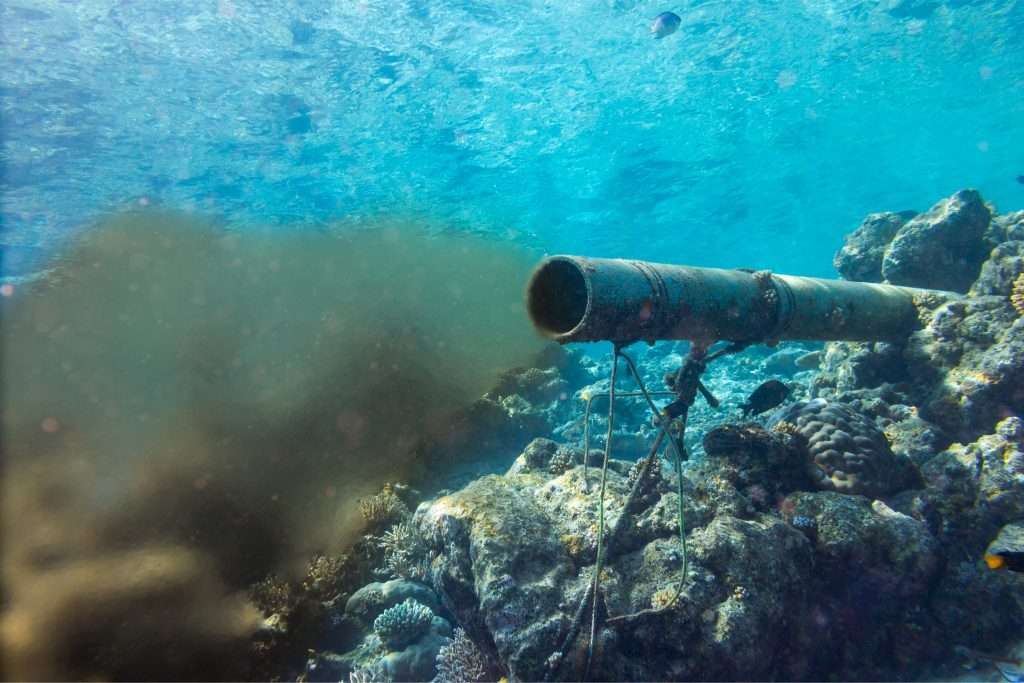
Where do cleaning chemicals go after we have used them?
At Green Wheel Cleaners we talk a lot about the dangers of toxic cleaning chemicals to human health, but these same chemicals are also having detrimental effects on the environment; especially our oceans.
What happens to the floor cleaning chemicals when we empty our bucket of solution down the drain after cleaning? What happens to the chemicals in the bath and shower cleaner after we rinse away the residue? A 2018 newspaper article published data from Environment Canada showing that a staggering 120 million cubic meters of untreated sewage and runoff entered Canadian waterways in 2016. Even if your city has a waste water treatment facility, which a surprising number of Canadian municipalities do not, if there are heavy rains, then overflow pipes come into effect and the excess water is directed away from the treatment plants straight into our waterways. According to the Environment Canada data, British Columbia contributed to 40% of the sewage overflow in the country in 2016. Even when the waste water is reaching a waste water facility most of them are not equipped to deal with the large number of chemicals found in most conventional toxic cleaning products.

Here is a list of some of the chemicals found in toxic cleaning products that can harm our oceans:
Triclosan
- Triclosan is the active ingredient found in a lot of products labeled “anti-bacterial”. It can be found in hand soaps, dish washing soaps and toothpaste.
- Triclosan was declared toxic by Environment Canada in 2012, yet it remains in products for sale in Canada.
- It is been shown to have toxic effects to marine phytoplankton[1] algae[2][3] and other aquatic life essential to the ecosystem and food chains in our oceans
- Recent studies have highlighted concerns that Triclosan is an endocrine disruptor. In a study of frogs, researchers found that tadpoles exposed to low levels of Triclosan had altered thyroid hormone development [4]. They also found that exposure to Triclosan effected thyroid hormone-associated gene expression.[5]
- Triclosan found in mammals has been shown to impair mitochondrial function.
Phosphates
- While most of the excess phosphate in our oceans comes from industry and agriculture, phosphates can also be found in many cleaning products. While it may be hard as individuals to control big industry, we do have control and choice over the cleaning products we use in our home and our business.
- Phosphates are typically used in cleaning products to soften hard water. This is why you will find them in dish soaps and laundry detergents.
- Phosphates are not biodegradable and are soluble in water, this means that they accumulate easily in our waterways and oceans. [6]
- Phosphates acts as nutrients for algae, this lead to a process called ‘eutrophication’. The added nutrients to the water cause an exponential growth in algae. The resulting algal blooms deplete the oxygen in the water creating “dead zones” where other aquatic fauna and flora cannot survive. [7]
Phthalates
- Phthalates are found in many fragranced cleaning products, such as air fresheners, dish soap, and all-purpose cleaners.
- The American Geophysical Union journal GeoHealth, found evidence of exposure Phthalates in over 70 percent of dolphins studied in Florida.
- Phthalates have been identified an endocrine disruptor for life in our waterways. .[8]
- Endocrine disruptors interfere with hormones and reproduction of marine life, and they may even cause serious neurological issues in animals.
Nonylphenol Ethoxylate (NPE)
- NPE’s act as a surfactant in many cleaning products such as all-purpose cleaners and degreasers.[9]
- NPE are not biodegradable meaning that they persist and accumulate in our oceans.
- NPEs have toxic effects on marine life. They are known endocrine disruptors and has been linked to increased fertility issues in fish.[10]
Methylisothiazolinone
- Methylisothiazolinone is used as a preservative in many cleaning product, even ones claiming to be “green”.
- According The U.S Environmental Protection Agency Methylisothiazolinone is “moderately to highly toxic to freshwater and estuarine/marine organisms”.[11]
Now we know some of the cleaning chemicals that can harm our oceans, what can we do as consumers to help protect our waterways?
- Avoid buying cleaning product that do not have the ingredients clearly labeled on the bottle.
- If they list the ingredient, do a quick online check of the ingredients to make sure that they are not harmful to our waterways.
- Stay away from products marked “Danger” or “Poison” and avoid “Caution” or “warning” labels where you can.
- Avoid or reduce our use of antibacterial products. They are heavily overused and as well as having a toxic effect on our marine life, they also contribute to the growth antimicrobial resistance in bacteria, leading to “super bugs”
- Only buy and use cleaning products that easily biodegrade.
- Share this article to spread the message!

To Find Out More About Our Green Janitorial Service in Victoria BC Contact us today
References
- DeLorenzo, ME and J Fleming. 2008. Individual and mixture ef-fects of selected pharmaceuticals and personal care products on the marine phytoplankton species Dunaliella tertiolecta. Archives of Environmental Contamination and Toxicology 54: 203-210
- https://www.sciencedirect.com/science/article/pii/S0025326X14002884
- ang, LH, GG Ying, HC Su, et al. 2008. Growth-inhibiting effects of 12 antibacterial agents and their mixtures on the freshwater microalga Psudokirchneriella subcapitata. Environmental Toxi-cology and Chemistry 27(5): 1201-1208.
- Crofton, KM, KB Paul MJ DeVito, and JM Hedge. 2007. Short-term in vivo exposure to the water contaminant triclosan: Evi-dence for disruption of thyroxine. Environmental Toxicology and Pharmacology 24:194-197. Veldhoen, N, RC Skirrow, H Osachoff, et al. 2006.The bactericidal agent triclosan modulates thyroid hormone-associated gene expression and disrupts postembryonic anuran development. Aquatic Toxicology 80: 217-227. 9 Veldhoen, et al. 2006.
- Newton, AP, SM Cadena, ME Rocha, et al. 2005. Effect of triclosan (TRN) on energy-linked functions of rat liver mitochondria. Toxi-cology Letters 160: 49-59.
- oltan, H., Kamp-Nielsen, L., & Stuanes, A. O. (1988). Phosphorus in soil, water and sediment: an overview. In Phosphorus in freshwater ecosystems (pp. 19-34). Springer, Dordrecht.
- Correll, D. L. (1998). The role of phosphorus in the eutrophication of receiving waters: a review. Journal of Environmental Quality, 27(2), 261-266.
- https://www.sciencedirect.com/science/article/pii/S0048969708006876
- Data on file. Enviro Care® Technical Bulletin: Health and Safety Data Specifications.
- World Wildlife Fund Briefing: Nonylphenol Ethoxylates (NPE). Available at www.ngo.grida.no/wwfneap/Publication/briefings/Nonylphenol.pdf. Accessed October 13, 2011.
- https://www3.epa.gov/pesticides/chem_search/reg_actions/reregistration/fs_G-58_1-Oct-98.pdf
